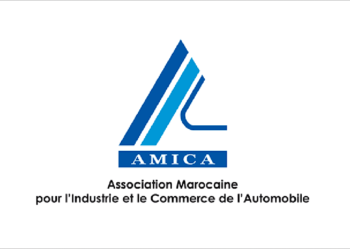5PL logistics, SNECI’s complete customer logistics solution

In recent years, globalization has led to a strong growth in international trade with an ever-increasing volume of goods in circulation. As a result, logistics has become increasingly important. However, many companies wishing to develop and not having the internal resources to ensure logistics that meet the demands of their customers, have had to call on logistics service providers to outsource all or part of their deliveries, as marketplaces do for B2C products, for example, to be able to concentrate solely on their activity. The 5PL logistics system is a service offering in which a customer outsources their entire supply chain to a logistics provider. The different levels of party logistics, ranging from 1 to 5, include raw material management, warehousing, transport, distribution, implementation of connected information systems, and various logistics consultancy services. Some providers offering 5PL logistics go as far as fixing prices and, in some cases, renegotiating the price already determined.
What is a logistics provider and 5PL?
Logistics and the fifth party logistics (5PL) system is a service provider responsible for designing and managing the logistics solution for its client. It is important to know that logistics service providers are classified into different categories from 1PL to 5PL.
The logistics service provider meets all or part of the logistics needs of its customers. They take care of all the logistical steps from their customer to the end customer.
Logistics service providers are classified as 1PL, 2PL, 3PL, and 5PL.
Each category is distinguished by the scope of services and the provider’s involvement in the supply chain.
- 1PL logistics providers carry out transport
- 2PL logistics service providers provide transport equipment and infrastructure
- 3PL logistics providers manage transport operations and identify 2PL partners
- 4PL logistics providers optimize the logistics chain, not only the delivery
- 5PL logistics providers further optimize logistics by exploiting networks of existing logistics operators
What is the 1PL :
The logistics provider offering First Party Logistics (1PL) corresponds to the first degree of outsourcing of a company’s logistics activities. This involves the client subcontracting the transport of its goods on a regular basis (and not on a one-off basis). The 1PL uses a carrier that will be paid according to volume, kilometers (or both). This type of organization is particularly suitable for companies for which transport is not a priority and is not a key factor in their business.
Logistics providers offering 1PL logistics operate at the first level of the logistics subcontracting chain, i.e. transport, and usually have a fleet of vehicles, they offer transport services at local, regional, or national levels. They may, for example, be responsible for loading the goods onto the truck, transporting the goods to your customer, service provider, or partner, and finally unloading the goods once they have arrived on site.
It should be noted that some 1PL logistics providers only serve one geographical area and others specialize in the transport of a single category of products. The choice of a logistics provider offering 1PL is particularly relevant for companies whose core business does not depend on transport and who wish to optimize their shipments.
What is the 2PL :
The logistics provider offering Second Party Logistics (2PL) corresponds to a second level of outsourcing of a company’s logistics activities. It involves outsourcing more activities than for the 1PL by adding storage and warehousing. The logistics provider offering 2PLs is therefore necessarily a carrier with storage capacity. The compensation for 2PL is mainly based on the principle of cost per pallet (for transport and storage).
What is the 3PL :
The logistics provider offering Third Party Logistics (3PL) corresponds to a third level of outsourcing of a company’s logistics activities. At this stage, the company outsources a set of logistics-related activities. The logistics provider offering the 3PL offers basic operational logistics services, such as transport and storage included in the 1PL and 2PL), then the 3PL includes order preparation, labelling or assembly but also, increasingly, customs or stock management or even cross-docking. In 3PL+, the service provider offers supply chain management as an additional service.
Thanks to a logistics provider offering 3PL, customers who are not specialized in logistics can thus almost completely detach themselves from this aspect and concentrate on their core business.
It should be noted that by opting for a 3PL logistics provider, some companies lose one of the only two links to the customer, namely delivery.
What is the 4PL :
The logistics service provider offering Fourth Party Logistics (4PL) corresponds to a fourth stage of outsourcing a company’s logistics activities, which encompasses 1PL, 2PL, 3PL, and 4PL, develops and implements an integral solution for the whole or a certain part of the logistics process, which it organizes, manages, visualizes, optimizes continuously and then adapts if market conditions and/or customer wishes change.
In addition, he is responsible for selecting and supervising the logistics service providers who carry out the assignments, so that the best price/quality ratio is always guaranteed. The development of this activity has been greatly facilitated by the growth of ICT and the Internet.
The logistics provider offering 4PL has the task of coordinating the various players involved throughout a company’s logistics chain. It combines its own resources, capacities, and technologies with those of other service providers to design and manage complex supply chains.
In general, choosing a 4PL provider is of interest to companies that have to manage complex or international supply chains.
What is the 5PL :
Highly developed in the USA, we could define the 5PL as an external supplier that coordinates all the activities of subcontracting companies. It differs from the 4PL by its engineering services: it offers automated systems that make the supply chain increasingly competitive and efficient. The logistics provider offering the Fourth Party Logistics 5PL includes the 1PL, 2PL, 3PL, 4PL, and 5PL.
It qualifies logistics service providers who design, organize, and implement logistics solutions on behalf of a client, particularly in terms of information systems. The 5PL is the last phase of evolution in the field of logistics for a company and constitutes the key to the maturity of the Supply Chain, by crossing the competencies between the major players in logistics (3PL and LLP) and consulting companies and SSII (4PL and 5PL).
The 5PL provider offers a real service oriented towards customer satisfaction (consulting, audit, assistance, specific developments,) with more and more automated and intelligent systems capable of improving the performance of the Supply Chain Transport.
Compared to 4PLs, they also offer logistics engineering services, in particular setting up automated systems to make the supply chain more efficient. These are generally order systems, stock management, and shipment management systems.
It is worth noting that 5PL logistics service providers even design the logistics solution for the client company from start to finish. With the help of dedicated information systems, 5PL logistics service providers clearly add an engineering activity to the service, compared to the intervention of a 4PL.
SNECI and 5PL services :
With 70 years of expertise in improving industrial performance and business development, SNECI and its 10 offices around the world offer complete and complex supply chain solutions that meet the demands of customers regardless of the location and size of the company.
Here are the services that SNECI offers in the area of 5PL, a service developed thanks to our global vision of the supply chain.
For suppliers in charge of delivering to their customers, we bring a reduction in costs, but also serenity and simplification of their cost control.
Industrial clients are reassured to have local support close to their factories, speaking the language of their teams, in the same time zone, guaranteeing a 24-hour response.
Even during successive lockdowns and when the global supply chain was seized up, we were able to find alternative transport and/or storage solutions and never had the slightest line stoppage.
Definition of the logistics strategy :
Thanks to our expertise in the industrial world for more than 70 years, we are able to advise our clients upstream of their projects, in order to optimize the costs of their global Supply Chain and/or to define their Local Integration strategy, taking into account the specificities of the countries where we operate.
SNECI is also an actor in the strategies by participating, for example, in the definition of the new Track & Trace norms & standards in one of the working groups with GALIA / Odette.
Planning & advising on the definition of the logistics flow:
As a 5PL partner, SNECI takes into account all aspects of the implementation of the logistic flow, in order to optimize the costs of the Supply Chain as a whole.
In the pre-project phase, this involves :
- Optimization of cardboard, pallet, and container packaging while keeping in mind environmental needs in the calculation of the CO2 footprint.
- Researching different logistics scenarios (logistics routes, warehouses, final transport). For warehouses, we audit them to ensure their ability to meet the end customer’s requirements and upgrade them in case their experience in the end customer’s industry is limited
This is achieved through our complex calculation tools, developed through decades of experience in multi-modal logistics, taking into account all parameters. We are thus able to determine the cost of the overall service per piece. Then we can establish the sensitivity of the cost to different variables (evolution of freight rates, evolution of exchange rates, etc.).
This also includes the management of raw materials with the implementation of an order grouping system.
Execute and control all logistics operations:
To do this, we are connected via EDI or Web EDI with the end customer, which allows us to anticipate the production needs of suppliers to avoid supply shortages while ensuring an optimal stock level, in order to optimize the supplier’s WCR.
Thereafter, we manage the entire logistics flow:
- Transport management, ensuring that trucks and ships are full, in order to optimize costs. This is made possible by the previous step of analyzing the EDI
- Warehouse management (including daily monitoring and control of incoming and outgoing goods, repacking to the end customer’s standard, and managing the returnable packaging box loop from the customer’s factory to the warehouse)
- Preparation of deliveries to the end customer’s factory (picking, D/N, and labeling) according to the end customer’s requirements
- preparation of documentation for the customs exit procedure, and management of the customs exit procedure. The T1 document and then the customs clearance with the pro forma invoice are carried out by SNECI on behalf of the suppliers
- management of the final transport (and sending of the ASN)
- management of logistical claims in the supplier’s interest (negotiation with the 3 PLs for the organization of taxis if they are responsible for the delay)
- management of the relationship with the end customer to achieve a 100% service rate, through a close relationship with the end customer’s logistics and quality and production teams in each factory, and the administration of the B2B portal on behalf of the supplier.
Finally, we also manage the financial flows as we prepare and send the invoice for the parts to the end customer on behalf of the supplier (electronic invoice via the end customer’s B2B portal), as well as monitoring the end customer’s payments.
All this is made possible by the implementation of key performance indicators throughout the supply chain. These indicators are managed and monitored to identify malfunctions as early as possible and propose alternative solutions, with a single objective: to achieve a 100% service rate and ensure delivery to the end customer.
If you would like to benefit from our 5PL logistics service, contact us directly via our website





